Support Optimization of Open TBM Tunneling in Luohe Formation Sandstone by CT Test and Numerical Simulation
Abstract
:1. Introduction
2. CT Scan
2.1. Sample Preparation
2.2. Scanning Principle
- Non-destructive, fluoroscopic, high-resolution, three-dimensional imaging, which can display and analyze small features through a large amount of image data without loss.
- CT images reflect the degree of energy attenuation in the process of X-ray penetrating the object, and its attenuation process conforms to the attenuation Formula (1). The macro research scale, the relative density of the internal structure of the sample is positively correlated with the gray level of CT images.
3. Result Analysis
3.1. Two-Dimensional Slice Display
3.2. Three-Dimensional Display
3.3. Pore Analysis
4. Support Scheme Optimization
4.1. Scheme Comparison
4.2. Numerical Simulation
4.3. Simulation Results Analysis
4.3.1. Deformation Analysis
4.3.2. Stress Analysis
5. Field Applications
6. Conclusions
- (1)
- The CT scan results indicate that in the two sets of samples from the Luohe Formation sandstone, the volume percentages of pores with a diameter of ≥34 μm are 2.3% and 1.5%, respectively, and the volume percentages of pores with an equivalent diameter greater than 200 μm are the largest, at 61.4% and 36.0%, respectively. This means that there is a relatively high porosity, and the pores are predominantly larger in size. This is macroscopically manifested as strong permeability in the surrounding rock, making it susceptible to softening and fragmentation.
- (2)
- The numerical simulation results show that replacing the original “bolt + mesh” support scheme with a “bolt + cable + mesh + steel belt” support scheme can effective control surrounding rock deformation, and the top maximum displacement from 94.7 mm reduced to 70 mm, and the radial stress at the boundary of the surrounding rock increased from 0 to 3 MPa, providing significant restraint to the surrounding rock.
- (3)
- Field applications have shown that after adopting the new support scheme, the maximum deformation of the surrounding rock has decreased from 50.3 cm to 28.5 cm, a reduction of 43.3%. The water inflow rate has decreased from 308 m3/d to 98 m3/d, a reduction of 68.2%. The TBM excavation speed has increased from 10 m/d to 17 m/d, an improvement of 70%. This significantly enhances construction efficiency and provides assurance for early production commencement.
Author Contributions
Funding
Institutional Review Board Statement
Informed Consent Statement
Conflicts of Interest
References
- Feng, L.F.; Wang, S.M.; Wang, H.L.; Chao, F.; Zhang, Y.H. Micro pore characteristics of Luohe aquifer sandstone in Binchang mining area typical roof water hazard mines. Coal Sci. Technol. 2023, 51, 208–218. [Google Scholar]
- Tian, L.; Liu, W.; Zhang, J.; Gao, H. Cataclastic Characteristics and Formation Mechanism of Dolomite Rock Mass in Yunnan, China. Appl. Sci. 2023, 13, 6970. [Google Scholar] [CrossRef]
- Ren, J.X.; Wang, X.L.; Chen, X. Physical and mechanical properties and failure mode of Luohe Formation sandstone after thawing. Coal Eng. 2021, 53, 153–158. [Google Scholar]
- Li, C.F.; Hu, W.Y.; Liu, Y.F. Vertical hydrogeological characteristics of Luohe aquifer and its significance of water-preserved coal mining. J. China Coal Soc. 2019, 44, 848–857. [Google Scholar]
- Deng, H.; Tian, G.; Yu, S.; Jiang, Z.; Zhong, Z.; Zhang, Y. Research on Strength Prediction Model of Sand-like Material Based on Nuclear Magnetic Resonance and Fractal Theory. Appl. Sci. 2020, 10, 6601. [Google Scholar] [CrossRef]
- Ke, Q.R.; Li, C.D.; Yao, W.M.; Fan, Y.B.; Zhan, H.B.; Li, B.C.; Zhang, X. Comparative characterization of sandstone microstructure affected by cyclic wetting-drying process. Int. J. Rock Mech. Min. Sci. 2023, 170, 105486. [Google Scholar] [CrossRef]
- Abdallah, Y.; Vandamme, M.; Chateau, C.; Garnier, D.; Jolivet, I.; Onaisi, A.; Richard, D.; Zandi, S. Mechanical characterization of thermally treated calcite-cemented sandstone using nanoindentation, scanning electron microscopy and automated mineralogy. Int. J. Rock Mech. Min. Sci. 2020, 125, 104158. [Google Scholar]
- Langford, J.; Holmøy, K.H.; Hansen, T.F.; Holter, K.G.; Stein, E. Analysis of water ingress, grouting effort, and pore pressure reduction caused by hard rock tunnels in the Oslo region. Tunn. Undergr. Space Technol. 2022, 130, 104762. [Google Scholar] [CrossRef]
- Zheng, D.; Ju, N.P. Scanning electronic microscope tests for rock micro-rupture mechanism and rdacture characteristic of phyllite. J. Eng. Geol. 2011, 19, 317–322. [Google Scholar]
- He, M.C.; Peng, T.; Wang, Y. Sedimentary characteristics and mechanical effects of soft rock. Hydrogeol. Eng. Geol. 1996, 2, 37–39. [Google Scholar]
- Ma, Q.; Zhu, Y. Experimental research on the microstructure and compressive and tensile properties of nano-SiO2 concrete containing basalt fibers. Undergr. Space 2017, 2, 175–181. [Google Scholar] [CrossRef]
- Xu, J.F.; Xie, X.Y.; Tang, G.J.; Zhou, B.; Xu, D.L.; Huang, Y. A new adaptive compressible element for tunnel lining support in squeezing rock masses. Tunn. Undergr. Space Technol. 2023, 137, 105–124. [Google Scholar] [CrossRef]
- Liang, B.; Tan, X.Y.; Jiang, L.G.; Jiao, B.B. Experimental analysis of slaking characteristics of mudstone in different pH solutions. J. Civ. Environ. Eng. 2015, 37, 23–27+59. [Google Scholar]
- Tan, L.R. Discussion on mechanism of disintegration and argillitization of clay—Rock. Rock Soil Mech. 2001, 22, 1–5. [Google Scholar]
- Chen, B.; Xiang, J.; Latham, J.P.; Bakker, R.R. Grain-scale failure mechanism of porous sandstone: An experimental and numerical FDEM study of the Brazilian Tensile Strength test using CT-Scan microstructure. Int. J. Rock Mech. Min. Sci. 2020, 132, 104348. [Google Scholar] [CrossRef]
- Louis, L.; Baud, P.; Wong, T.F. Microstructural inhomogeneity and mechanical anisotropy associated with bedding in rothbach sandstone. Pure Appl. Geophys. 2009, 166, 1063–1087. [Google Scholar] [CrossRef]
- Kim, K.Y.; Zhuang, L.; Yang, H.; Kim, H.; Min, K. Strength anisotropy of berea sandstone: Results of X-Ray computed tomography, compression tests, and discrete modeling. Rock Mech. Rock Eng. 2016, 49, 1201–1210. [Google Scholar] [CrossRef]
- Ambrose, J. Failure of Anisotropic Shales under Triaxial Stress Conditions. Ph.D. Thesis, Imperial College London, London, UK, 2014. [Google Scholar]
- Liu, H.; Yang, G.S.; Shen, Y.J.; Ye, W.J.; Xi, J.M.; Jin, L.; Wei, Y.; Li, B.R.; Liu, S. CT visual quantitative characterization of meso-damage evolution of sandstone under freeze-thaw-loading synergistic effect. Chin. J. Rock Mech. Eng. 2023, 42, 1136–1149. [Google Scholar]
- Medici, G.; West, L.J. Reply to discussion on ‘Review of groundwater flow and contaminant transport modelling approaches for the Sherwood Sandstone aquifer, UK; insights from analogous successions worldwide’ by Medici and West (QJEGH, 55, qjegh2021-176). Q. J. Eng. Geol. Hydrogeol. 2023, 56, qjegh2022-097. [Google Scholar] [CrossRef]
- Yates, P.G.J. The material strength of sandstones of the Sherwood Sandstone Group of north Staffordshire with reference to microfabric. Q. J. Eng. Geol. Hydrogeol. 1992, 25, 107–113. [Google Scholar] [CrossRef]
- He, S.D.; Li, Y.R.; Aydin, A. A comparative study of UDEC simulations of an unsupported rock tunnel. Tunn. Undergr. Space Technol. 2018, 72, 242–249. [Google Scholar] [CrossRef]
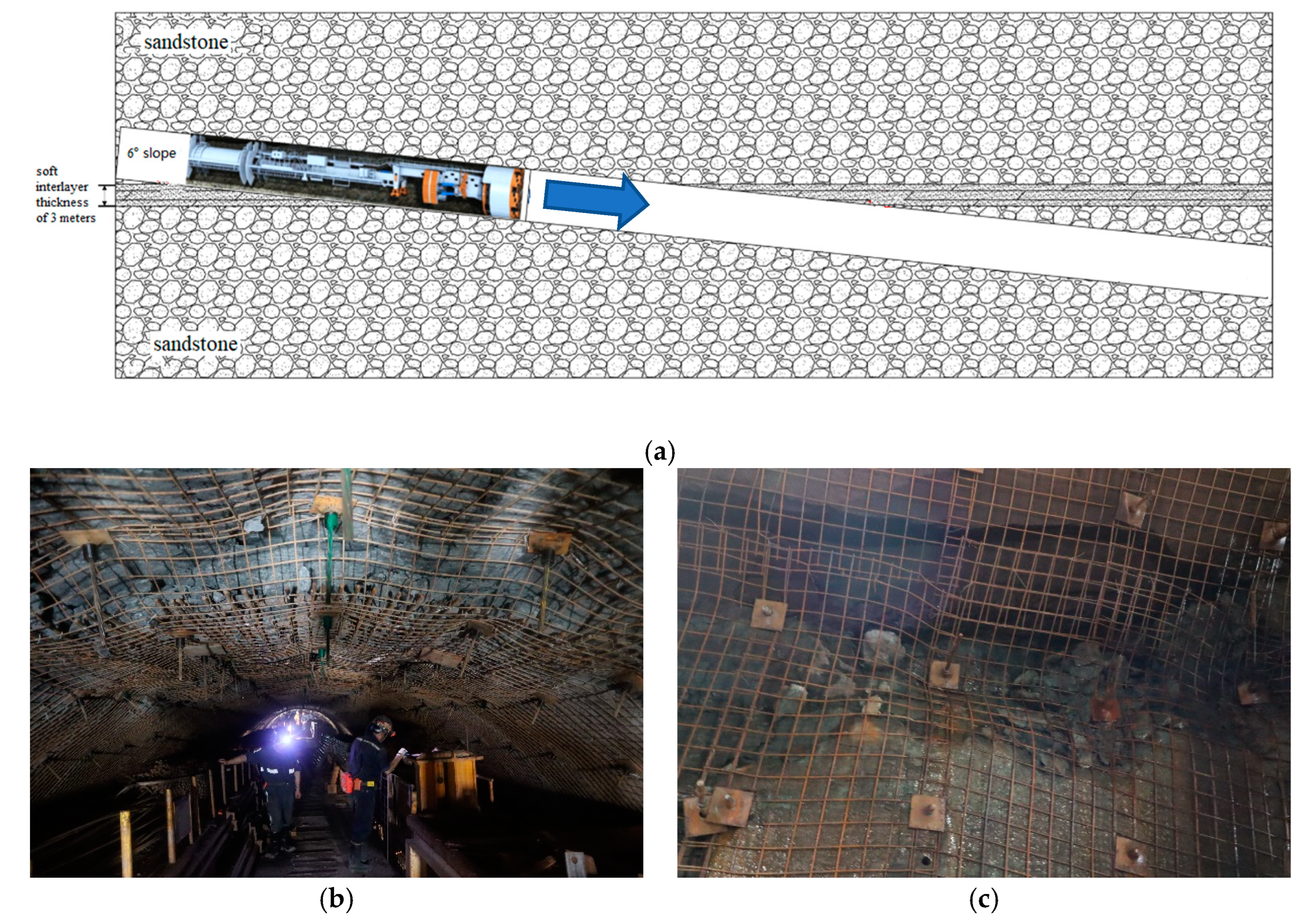




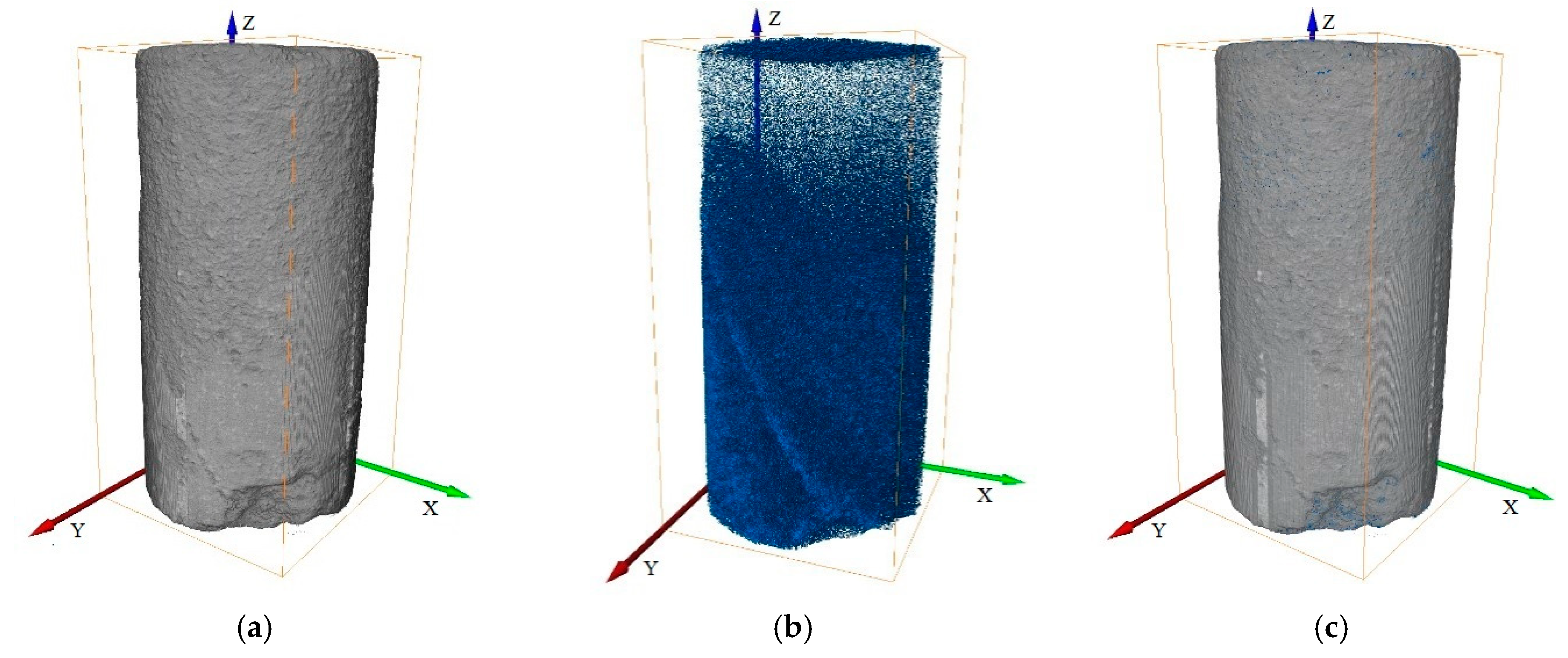

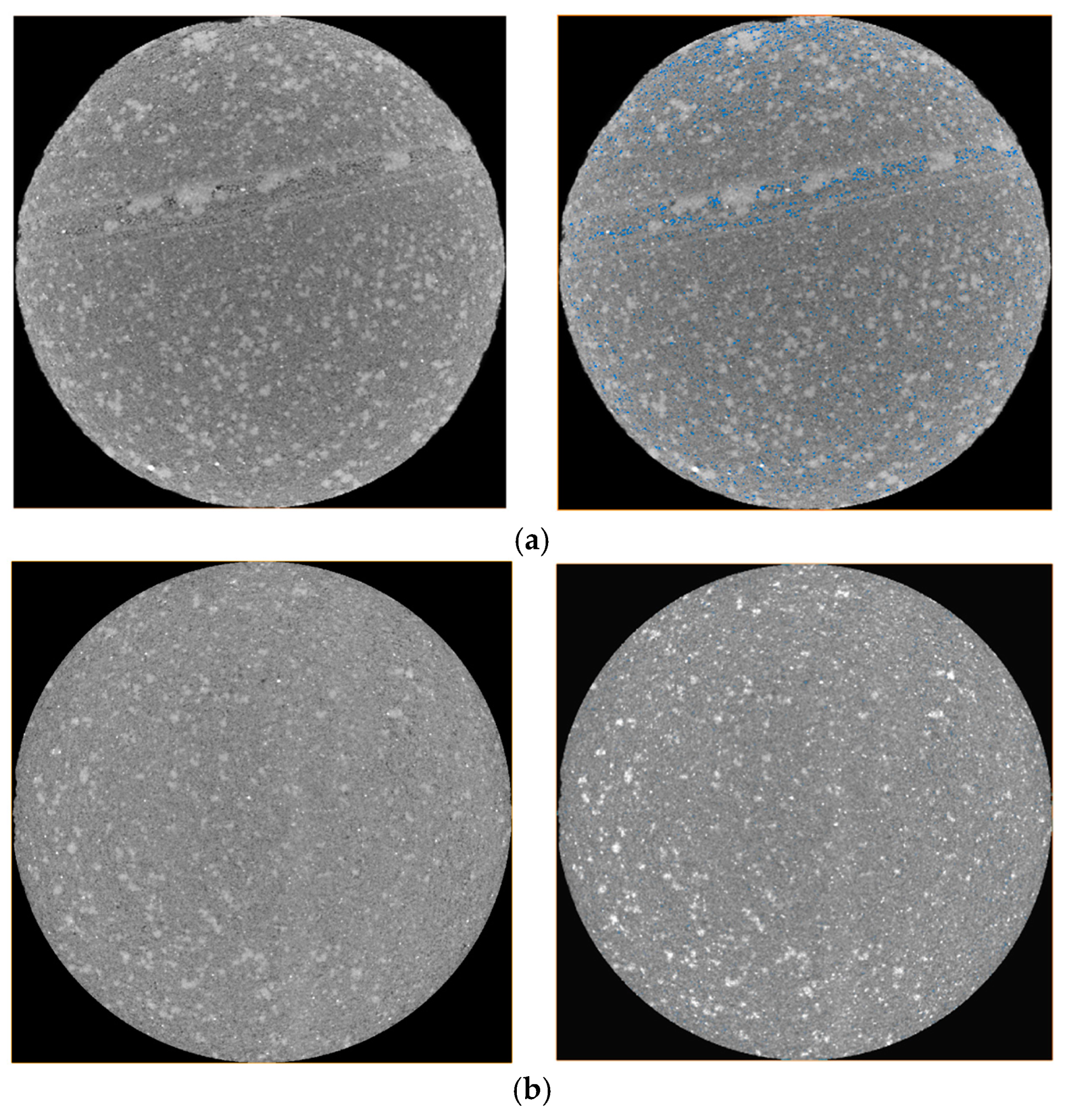
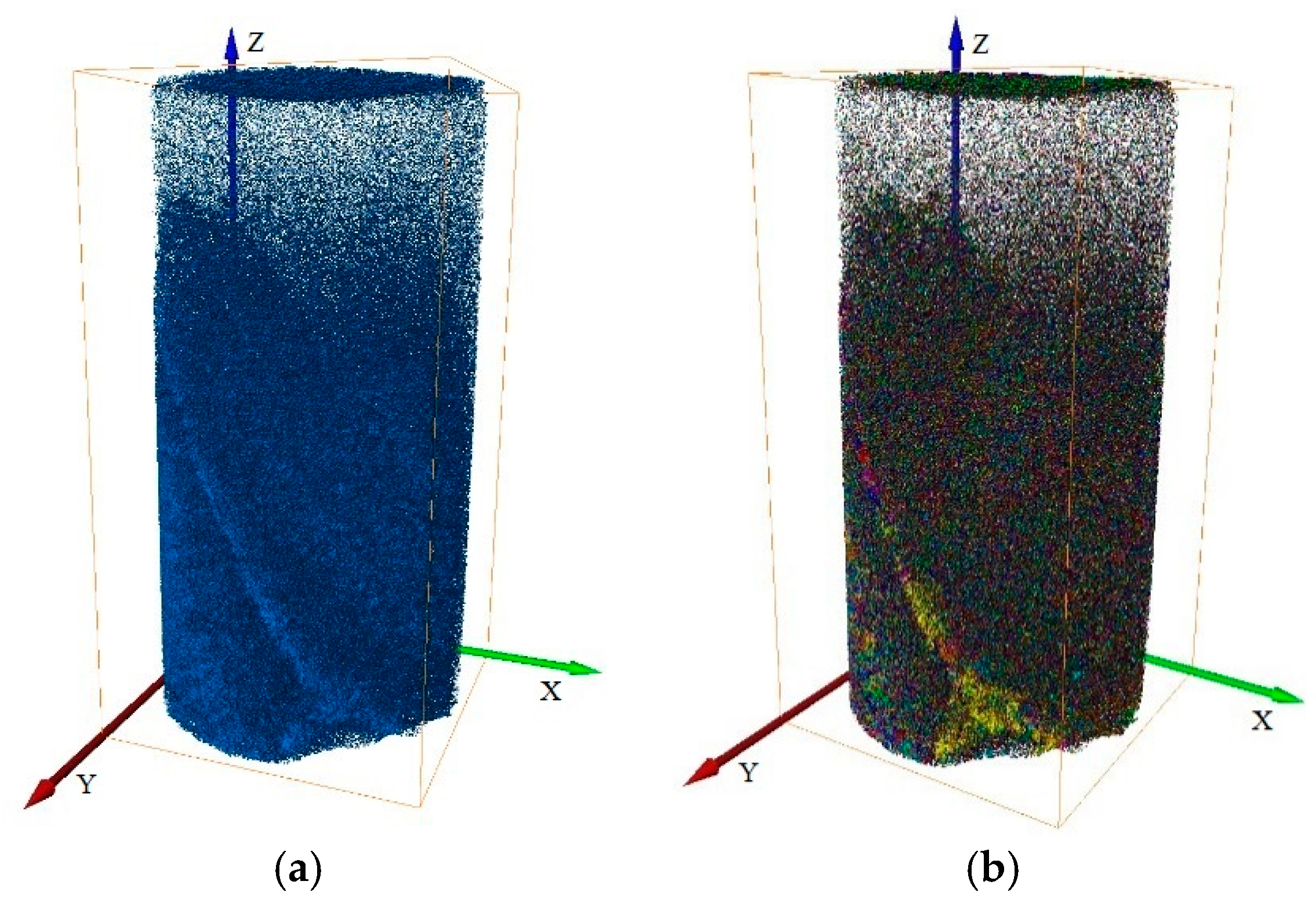
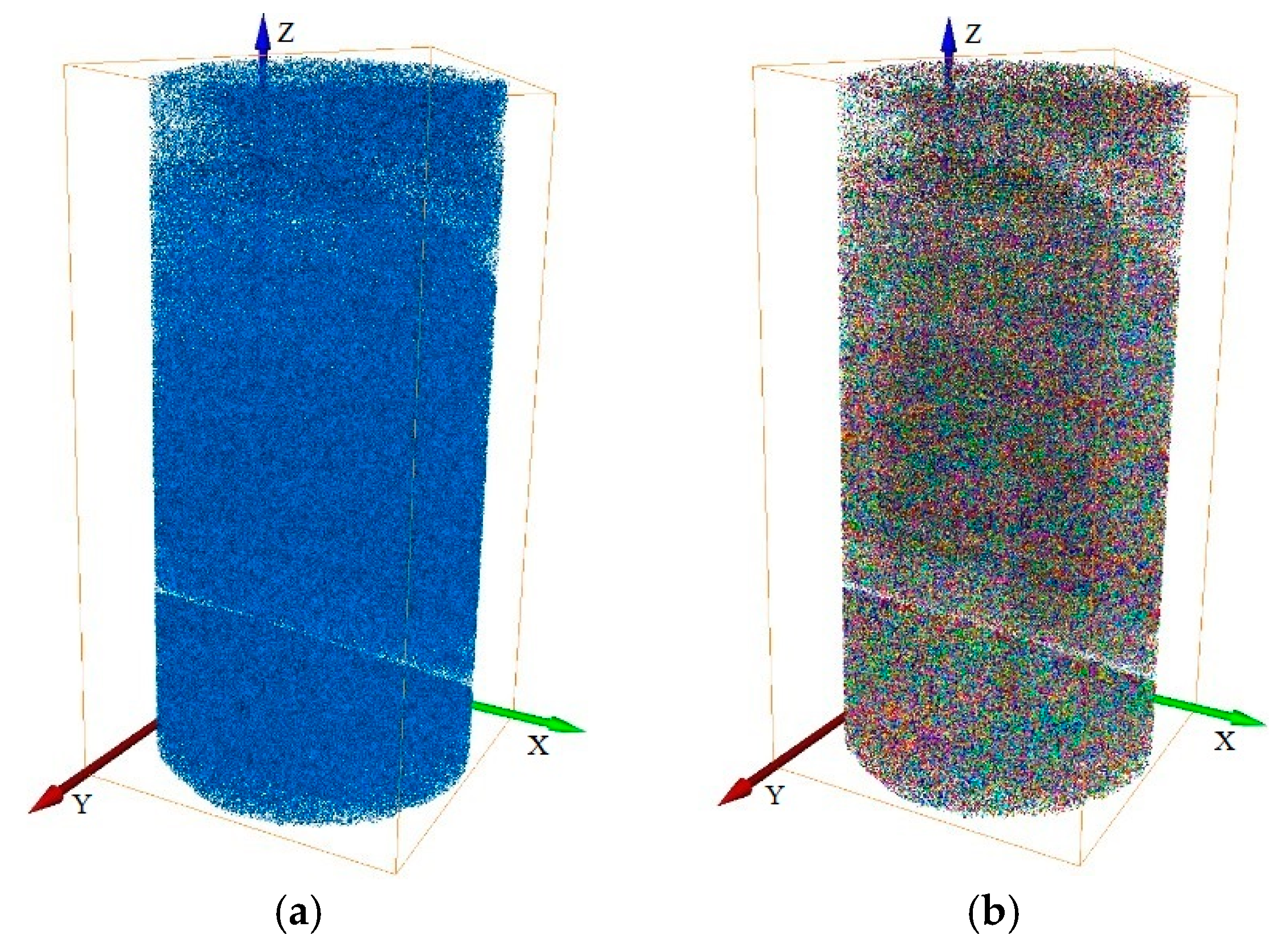
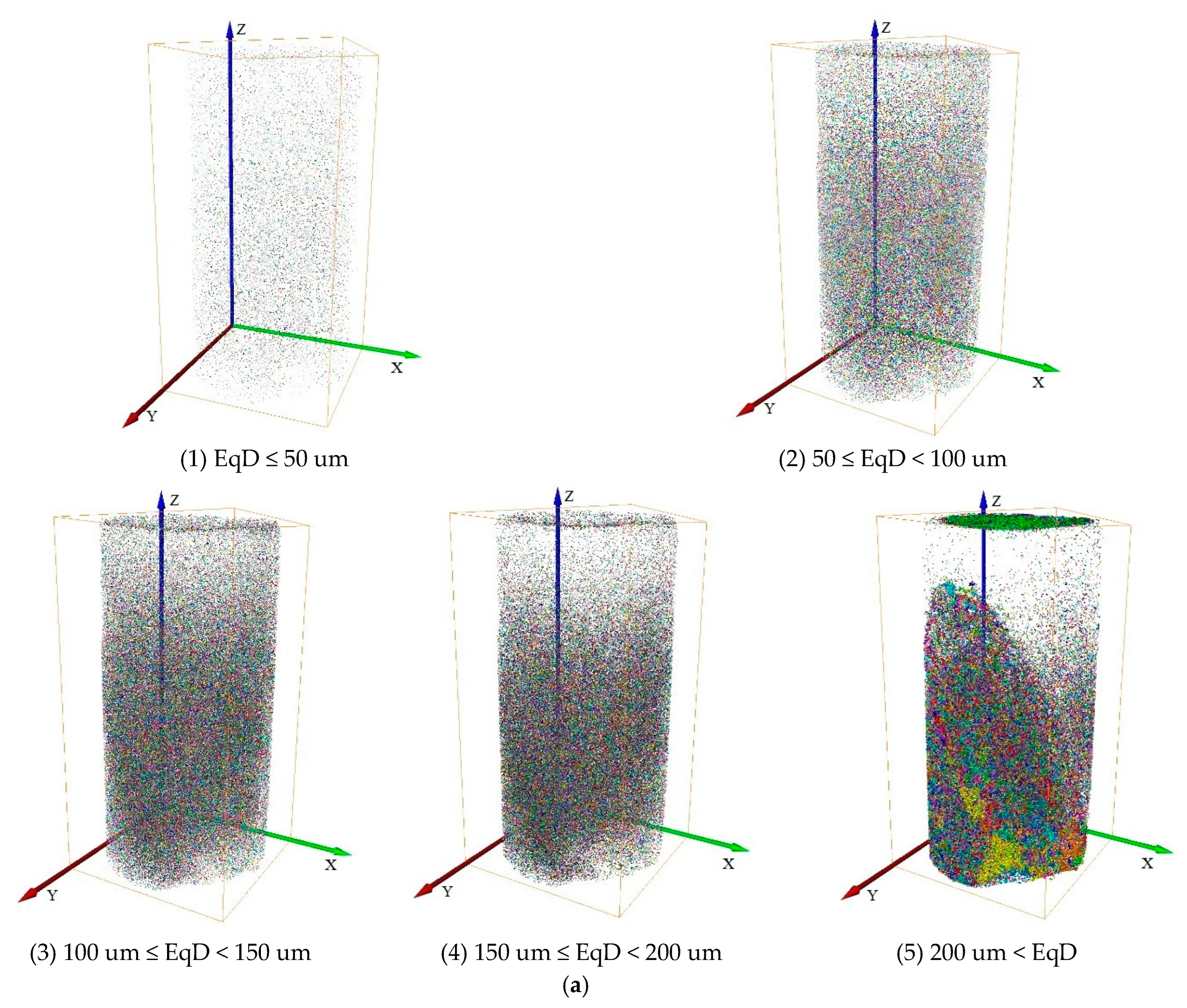
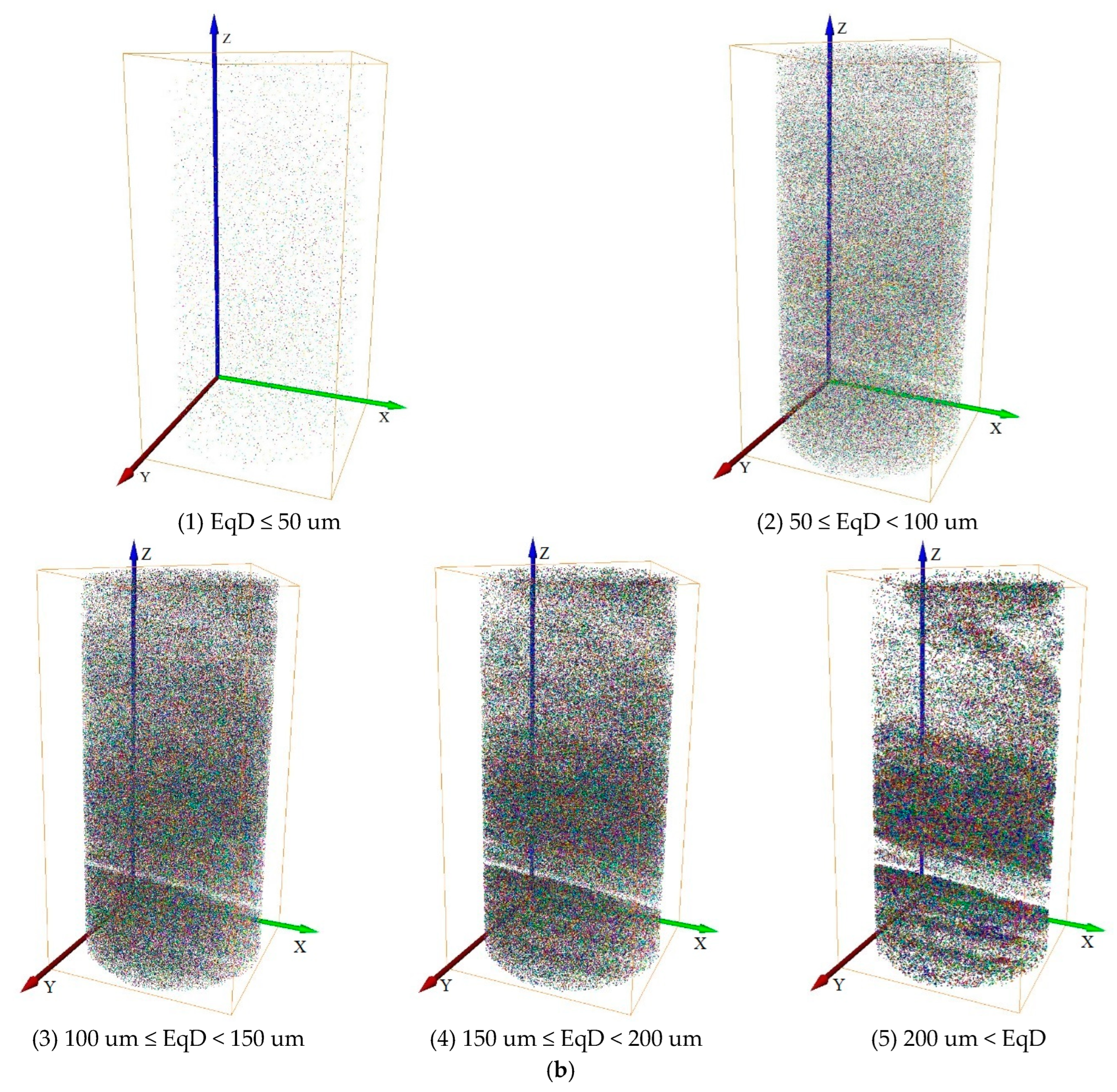

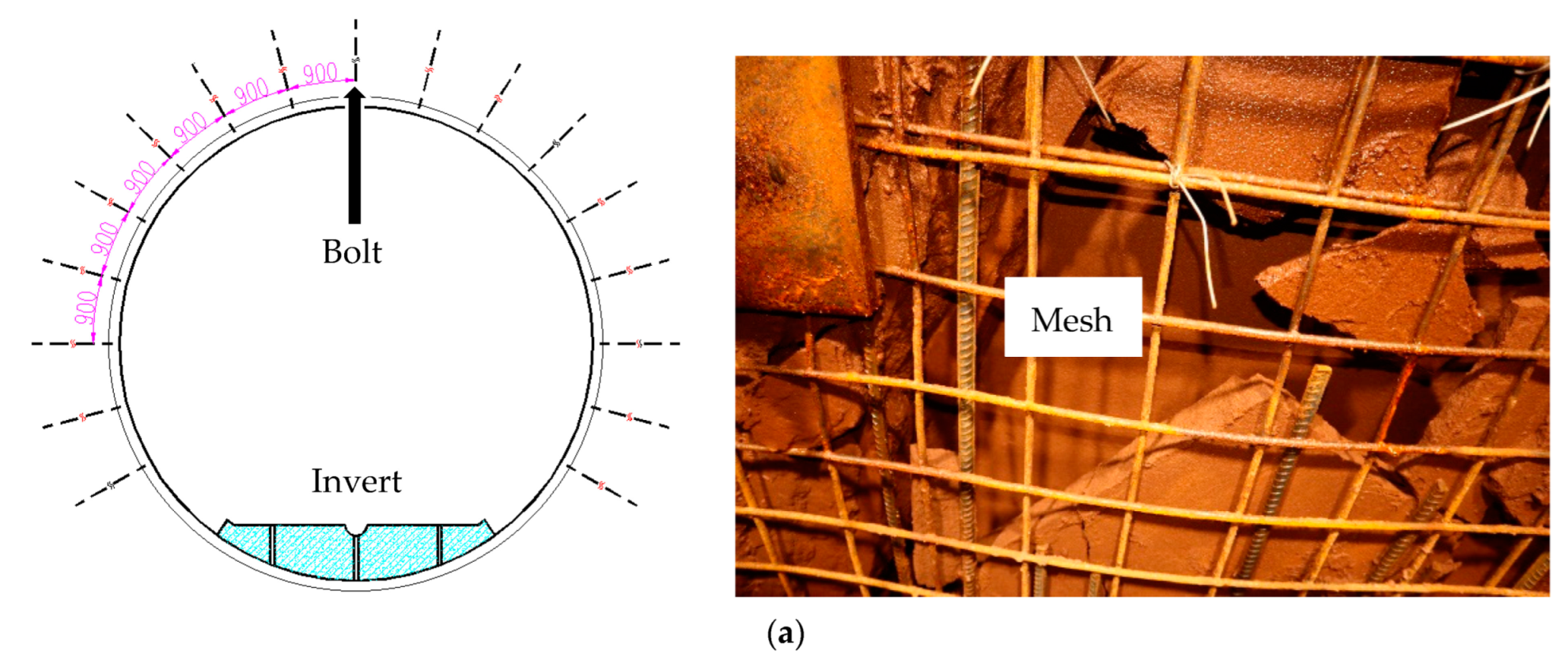
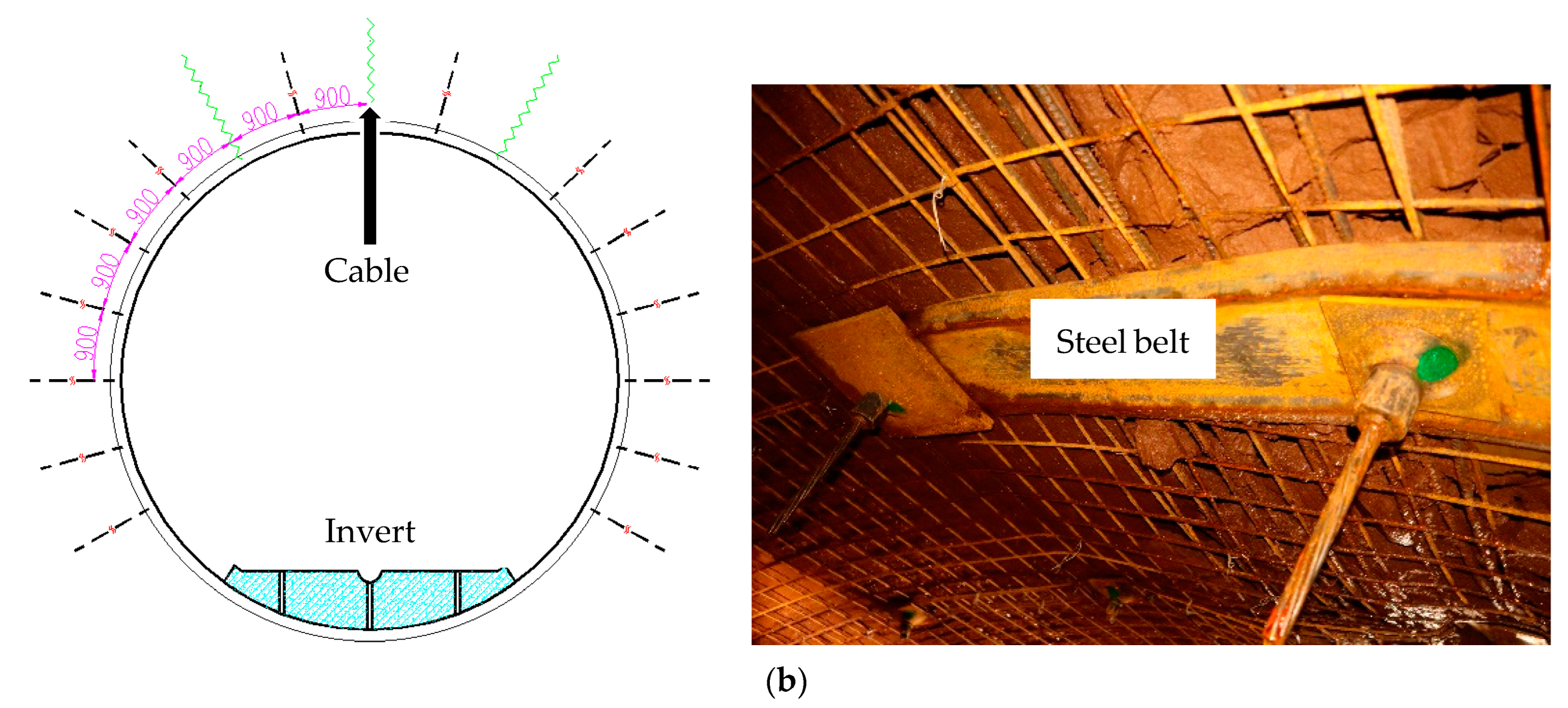

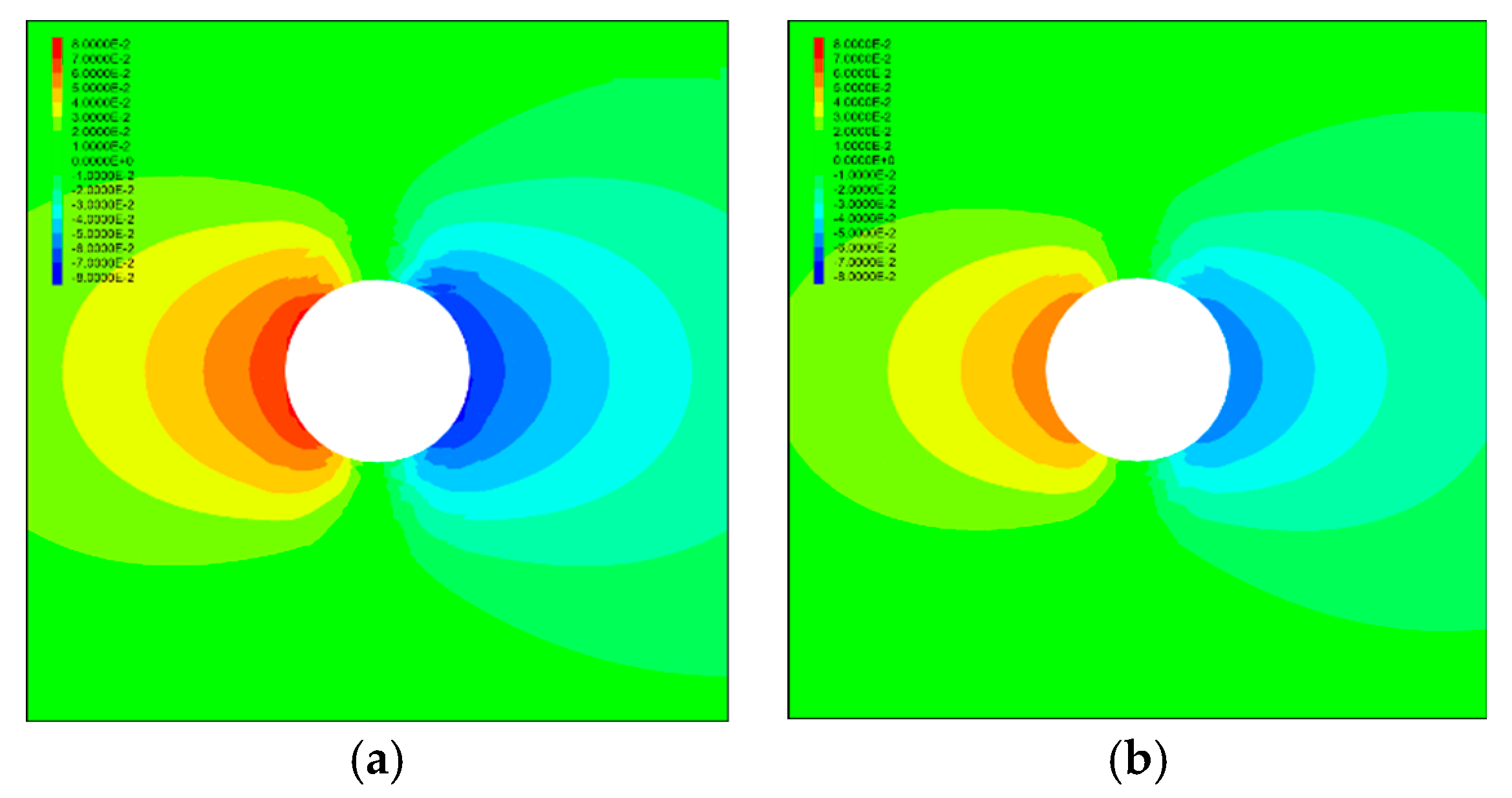

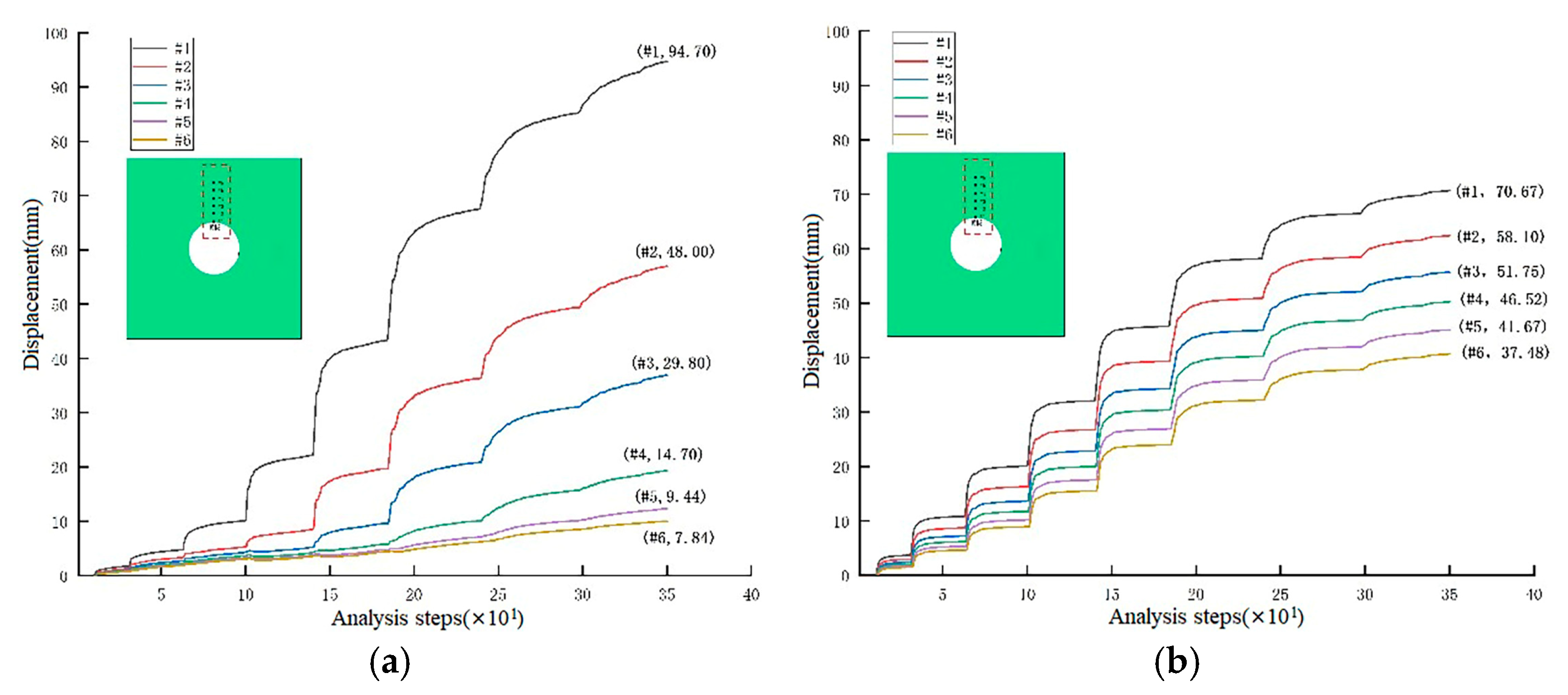
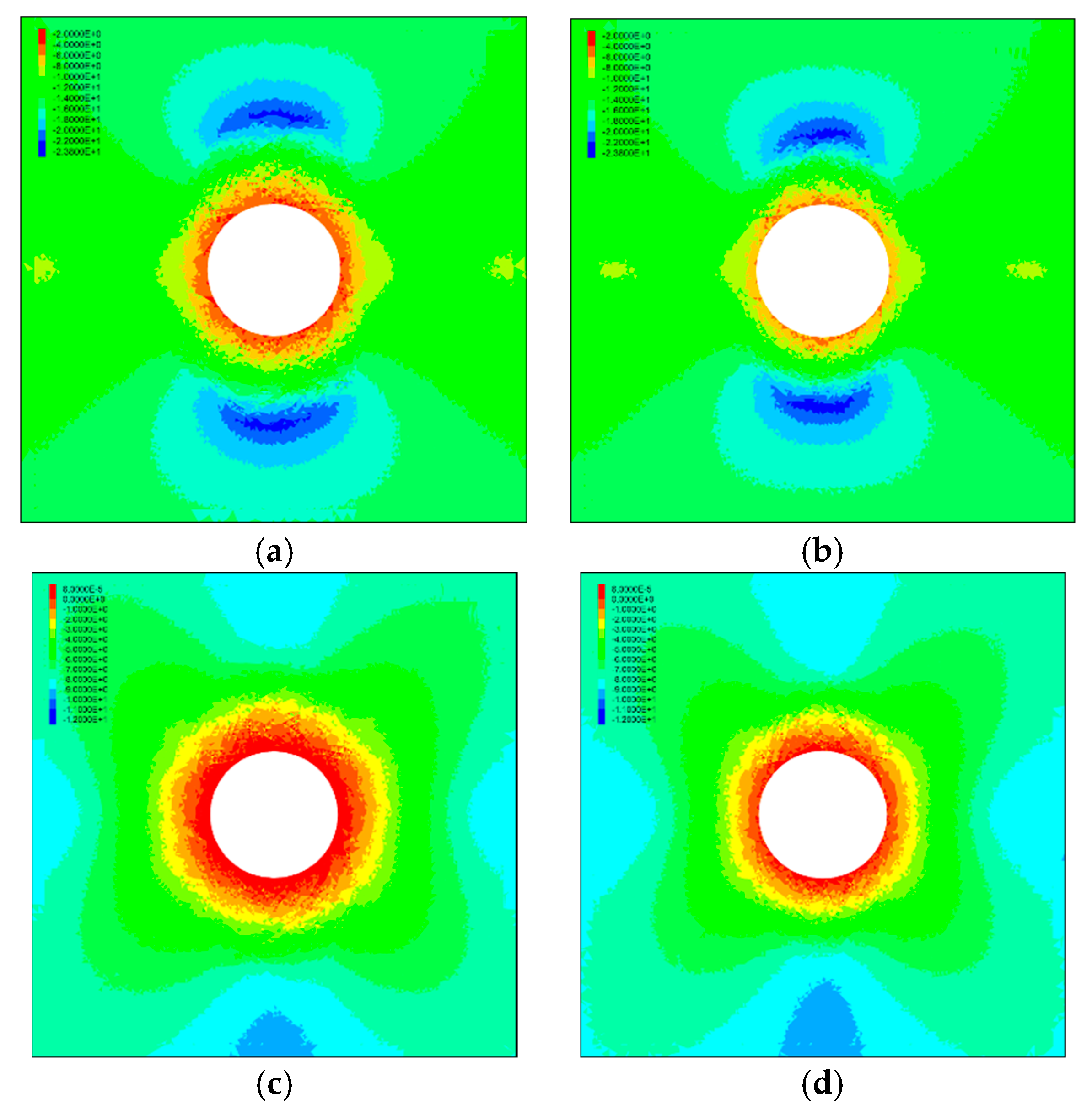


| Project | Parameter |
|---|---|
| sample size | 0.5 mm–400 mm |
| voltage | 20–300 kV |
| power | 80 W |
| resolution | 0.5 μm–100 μm |
| Range of EqD | EqD ≤ 50 um | 50 ≤ EqD < 100 um | 100 um ≤ EqD < 150 um | 150 um ≤ EqD < 200 um | 200 um < EqD |
|---|---|---|---|---|---|
| Quantity | 798,519/387,918 | 1,441,575/1,159,424 | 618,214/658,976 | 265,479/297,246 | 162,830/1,125,884 |
| Percentage of total pore volume | 0.7%/0.6% | 7.1%/9.8% | 14.3%/24.4% | 16.5%/29.3% | 61.4%/36.0% |
| Components | Bolt (Roots) | Cable (Roots) | Mesh (Sheets) | Steel Belt (Items) |
|---|---|---|---|---|
| Original scheme | 17 | 0 | 4 | 0 |
| Optimization scheme | 14 | 3 | 4 | 1 |
| Stratum | Rock Types | Density/(kg·m−3) | Bulk Modulus/MPa | Shear Modulus/MPa | Adhesive Strength/MPa | Angle of Internal Friction/(°) |
|---|---|---|---|---|---|---|
| Luohe Formation | sandstone | 2510 | 1530 | 1080 | 0.5 | 32 |
| mudstone | 2480 | 1300 | 920 | 0.6 | 30 | |
| fractured rock stratum | 2510 | 920 | 650 | 0.3 | 28 | |
| Anding Formation | sandstone | 2530 | 2170 | 1490 | 1.5 | 28 |
| mudstone | 2480 | 1750 | 1320 | 1.2 | 30 | |
| Zhiluo Formation | sandstone | 2710 | 7900 | 4800 | 2 | 26 |
| mudstone | 2680 | 6500 | 3600 | 2 | 30 | |
| fractured rock stratum | 2710 | 1000 | 900 | 1.7 | 25 |
Disclaimer/Publisher’s Note: The statements, opinions and data contained in all publications are solely those of the individual author(s) and contributor(s) and not of MDPI and/or the editor(s). MDPI and/or the editor(s) disclaim responsibility for any injury to people or property resulting from any ideas, methods, instructions or products referred to in the content. |
© 2023 by the authors. Licensee MDPI, Basel, Switzerland. This article is an open access article distributed under the terms and conditions of the Creative Commons Attribution (CC BY) license (https://creativecommons.org/licenses/by/4.0/).
Share and Cite
Kang, X.; Li, A.; Xie, X.; Zhang, K.; Zhou, B.; Kang, Y. Support Optimization of Open TBM Tunneling in Luohe Formation Sandstone by CT Test and Numerical Simulation. Appl. Sci. 2023, 13, 11812. https://doi.org/10.3390/app132111812
Kang X, Li A, Xie X, Zhang K, Zhou B, Kang Y. Support Optimization of Open TBM Tunneling in Luohe Formation Sandstone by CT Test and Numerical Simulation. Applied Sciences. 2023; 13(21):11812. https://doi.org/10.3390/app132111812
Chicago/Turabian StyleKang, Xin, Anyun Li, Xiongyao Xie, Kai Zhang, Biao Zhou, and Yuanfeng Kang. 2023. "Support Optimization of Open TBM Tunneling in Luohe Formation Sandstone by CT Test and Numerical Simulation" Applied Sciences 13, no. 21: 11812. https://doi.org/10.3390/app132111812





